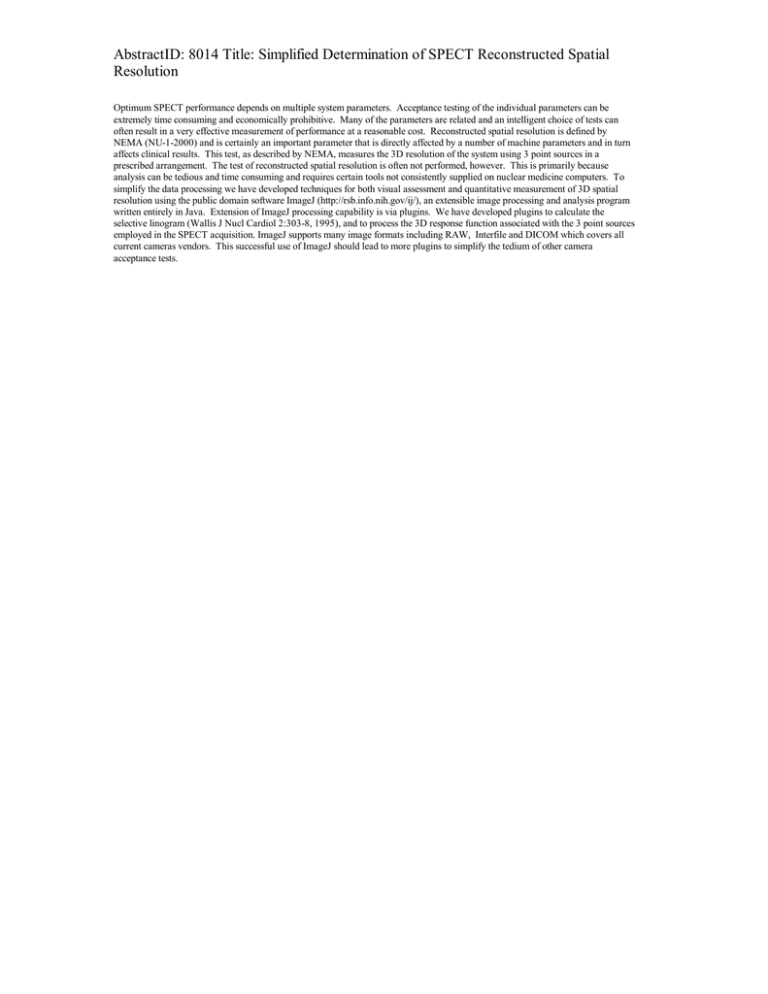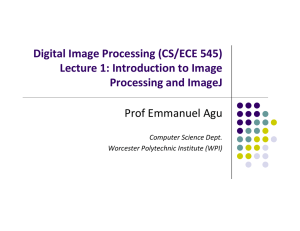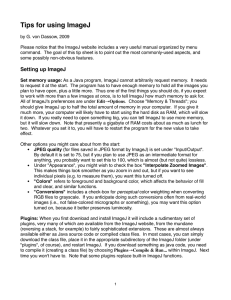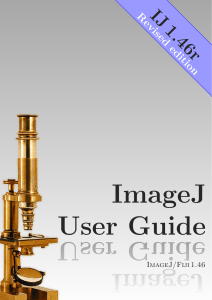AbstractID: 8014 Title: Simplified Determination of SPECT Reconstructed Spatial Resolution
advertisement

AbstractID: 8014 Title: Simplified Determination of SPECT Reconstructed Spatial Resolution Optimum SPECT performance depends on multiple system parameters. Acceptance testing of the individual parameters can be extremely time consuming and economically prohibitive. Many of the parameters are related and an intelligent choice of tests can often result in a very effective measurement of performance at a reasonable cost. Reconstructed spatial resolution is defined by NEMA (NU-1-2000) and is certainly an important parameter that is directly affected by a number of machine parameters and in turn affects clinical results. This test, as described by NEMA, measures the 3D resolution of the system using 3 point sources in a prescribed arrangement. The test of reconstructed spatial resolution is often not performed, however. This is primarily because analysis can be tedious and time consuming and requires certain tools not consistently supplied on nuclear medicine computers. To simplify the data processing we have developed techniques for both visual assessment and quantitative measurement of 3D spatial resolution using the public domain software ImageJ (http://rsb.info.nih.gov/ij/), an extensible image processing and analysis program written entirely in Java. Extension of ImageJ processing capability is via plugins. We have developed plugins to calculate the selective linogram (Wallis J Nucl Cardiol 2:303-8, 1995), and to process the 3D response function associated with the 3 point sources employed in the SPECT acquisition. ImageJ supports many image formats including RAW, Interfile and DICOM which covers all current cameras vendors. This successful use of ImageJ should lead to more plugins to simplify the tedium of other camera acceptance tests.





